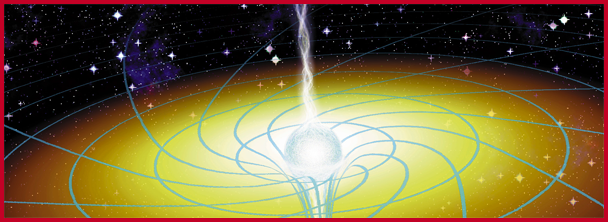
The topic of Relativity is often dismissed as too complex before it is even given a chance. While the mathematics involved might be a bit too heavy, the concepts themselves are surprisingly simple. Given all the furore about the Higgs boson (def) and the LHC, it is worth knowing a little bit about the subject.

The theory of general relativity was actually proposed after that for special relativity. The maths was so complex that, at the time and for a long time after, it was incomprehensible to the majority of scientists! It is a theory of gravitation, and is characterised by its use of Einstein's equations (def).

It started with the equivalence principle. This states that the gravitational force that we feel locally on the surface of the Earth is the same as the force we would appear to experience if we were moving in an accelerating reference frame (def). In other words, in terms of gravity, standing on the surface of the Earth is equivalent to floating in a spaceship that is accelerating through space using its engines. From this idea, Einstein deduced that free-fall (def) is actually inertial motion (def).
This differs from classical mechanics. In mechanics, an object in free-fall falls due to the force of gravity, and objects in free-fall (e.g. two floating objects in a spaceship) can accelerate relative to each other. Einstein remedied this clash of theories by proposing that spacetime is curved.
Special relativity states that motion is relative - there is no absolute, unmoving state of rest - and that this affects all physical laws and structure. It also defines the speed of light to be the same for all observers, regardless of motion. The theory was originally termed 'special' because it applied the principle of relativity to the 'special case' of intertial reference frames.
This video is a good introduction to the idea of time dilation and the relationship between time and speed. The premise that time is relative to your reference frame is counterintuitive, but once you've grasped it relativity becomes a lot simpler!
"The theory of relativity is required whenever we study objects that are either (a) moving in a strong gravitational field, or (b) moving near the speed of light. If (b) is true but not (a), we can get away with using a simpler version of the theory called special relativity; historically, this is what Einstein developed first, while the more encompassing theory of general relativity came later." - Ask an Astronomer, Astronomy Department at Cornell University
The two theories of relativity postulate the existence of warped areas of space such as black holes, effects such as gravitational lensing, time dilation, length contraction, and mass-energy equivalence (see 'Nuclear' for more information on this). They also support theories of an expanding universe.


